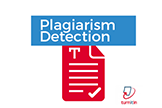EVOLUSI DINAMIK SUN'S BIRTH CLUSTER DAN PENCARIAN SOLAR SIBLINGS DI BIMASAKTI
Abstract
Sebagian besar bintang-bintang di galaksi terbentuk di dalam gugus bintang, baik gugus terbuka maupun gugus bola. Begitu juga dengan Matahari, yang diperkirakan terbentuk pada 4,6 milyar tahun lalu di dalam sebuah gugus terbuka (sun’s birth cluster). Bintang-bintang yang terbentuk bersamaan dengan Matahari di dalam sun’s birth cluster, disebut sebagai solar siblings. Argumen ini didukung oleh penemuan radioisotop berumur pendek dan objek-objek Edgeworth-Kuiper yang memiliki inklinasi dan eksentrisitas tinggi di Tata Surya. Pekerjaan ini bertujuan untuk mempelajari evolusi dinamik sun’s birth cluster selama 4,6 milyar tahun dan mencari keberadaan solar siblings di Bimasakti dalam radius 1 kpc dari Matahari. Simulasi N-benda dilakukan untuk memahami evolusi dinamik sun’s birth cluster dan sebaran solar siblings saat ini dalam pengaruh potensial gravitasi Bimasakti. Sebanyak 2 juta bintang dari katalog GAIA DR2 digunakan untuk mencari solar siblings dalam radius 1 kpc dari Matahari. Hasil dari pekerjaan ini menunjukkan bahwa sun’s birth cluster mengalami kehancuran pada usia kurang dari 1 milyar tahun setelah pembentukannya, akibat adanya gangguan pasang surut Bimasakti yang menyebabkan solar siblings terlepas dari sun’s birth cluster dan menyebar di sekitar orbit Matahari saat ini. Semakin besar jumlah bintang sun’s birth cluster yang dimodelkan, semakin banyak solar siblings yang dapat ditemukan di sekitar Matahari. Analisis kinematika dan fotometri solar siblings menunjukkan setidaknya terdapat 14 hingga 19 kandidat solar siblings pada katalog GAIA DR2 dalam radius 1 kpc dari Matahari.
Full Text:
PDF (Bahasa Indonesia)References
Lada, C.J. & Lada, E.A. (2003). Embedded Clusters in Molecular Clouds. Annual Review of Astronomy and Astrophysics, 429: 173.
Madrid, J.P. dkk. (2012). The Size Scale of Star Clusters. The Astrophysical Journal, 756: 167.
Gieles, M. dkk. (2011). The Life Cycle of Star Clusters in a Tidal Field. Monthly Notices of the Royal Astronomical Society, 413: 2509.
Gieles, M. dkk. (2007). The Effect of Spiral Arm Passages on the Evolution of Stellar Clusters. Monthly Notices of the Royal Astronomical Society, 376: 809.
Gieles, M. dkk. (2006). Star Cluster Disruption by Giant Molecular Clouds. Monthly Notices of the Royal Astronomical Society, 371: 793.
Baumgardt, H. & Makino, J. (2003). Dynamical Evolution of Star Clusters in Tidal Fields. Monthly Notices of the Royal Astronomical Society, 340: 227.
Takahashi, K. & Portegies-Zwart, S.F. (2000). The Evolution of Globular Clusters in the Galaxy. The Astrophysical Journal, 535: 759.
Martinez-Barbosa, C.A. dkk. (2016). The Evolution of the Sun’s Birth Cluster and the Search for the Solar Siblings with Gaia. Monthly Notices of the Royal Astronomical Society, 446: 823.
Brown, A.G.A. dkk. (2010). The Quest for the Sun’s Siblings: An Exploratory Search in the Hipparcos Catalogue. Monthly Notices of the Royal Astronomical Society, 407: 458.
Portegies-Zwart, S.F. (2009). The Lost Siblings of the Sun. The Astrophysical Journal, 696: L13.
Looney, L.W. dkk. (2006). Radioactive Probes of the Supernova-contaminated Solar Nebulae: Evidence that the Sun was Born in a Cluster. The Astrophysical Journal, 652: 1755.
Mishurov. Y.N. & Acharova, I.A. (2011). Is It Possible to Reveal the Lost Siblings of the Sun? Monthly Notices of the Royal Astronomical Society, 412: 1771.
Kroupa, P. (2001). On the Variation of the Initial Mass Function. Monthly Notices of the Royal Astronomical Society, 322: 231.
Plummer, H.C. (1911). Monthly Notices of the Royal
Astronomical Society, 71: 460.
Miyamoto, N. & Nagai, R. (1975). Three-dimensional Models for the Distribution of Mass in Galaxies. Publications of the Astronomical Society of Japan, 27: 533.
Allen, C. & Santillan, A. (1991). The Improved Model of the Galactic Mass Distribution for Orbit Computations. The Revista Mexicana de Astronomia y Astrofisica, 22: 255.
Pelupessy, F.I. dkk. (2012). N-body Integrators with Individual Time Steps from Hierarchical Splitting. Astronomy and Astrophysics, 557: A84.
Portegies-Zwart, S.F. dkk. (2013). Multi-physics Simulations Using a Hierarchical Interchangeable Software Interface. Computer Physics Communications, 183: 456.
Barnes, J. & Hutt, P. (1986). A Hierarchical O(N log N) Force-calculation Algorithm. Nature, 324: 446.
Fujii, M. dkk. (2007). Publications of the Astronomical Society of Japan, 59: 1095.
Hurley, J.R. dkk. (2000). Comprehensive Analytic Formulae for Stellar Evolution as a Function of Mass and Metallicity. Monthly Notices of the Royal Astronomical Society, 315: 543.
Schoenrich, R. dkk. (2010). Local Kinematics and the Local Standard of Rest. Monthly Notices of the Royal Astronomical Society, 403: 1829.
Bovy, J. (2014). Galpy: Galactic Dynamics Package. The Astrophysical Journal Supplement Series, 216: 29.
Girardi, L. dkk. (2000). Vizier Online Data Catalog: Low-mass Stars Evolutionary Track and Isochrones (Girardi+, 2000). Astronomy and Astrophysics Supplement Series, 141: 371.
Jordi, C. dkk. (2010). Gaia Broad Band Photometry. Astronomy and Astrophysics, 523: A48.
DOI: https://doi.org/10.17509/wafi.v4i1.15706
Refbacks
- There are currently no refbacks.
Copyright (c) 2019 Wahana Fisika

This work is licensed under a Creative Commons Attribution-ShareAlike 4.0 International License.
Wahana Fisika e-ISSN : 2549-1989 (SK no. 0005.25491989/JI.3.1/SK.ISSN/2017.02 ) published by Physics Program , Universitas Pendidikan Indonesia Jl. Dr.Setiabudhi 229 Bandung. The journal is indexed by DOAJ (Directory of Open Access Journal) SINTA and Google Scholar. Contact: Here
 Lisensi : Creative Commons Attribution-ShareAlike 4.0 International License.
Lisensi : Creative Commons Attribution-ShareAlike 4.0 International License.







